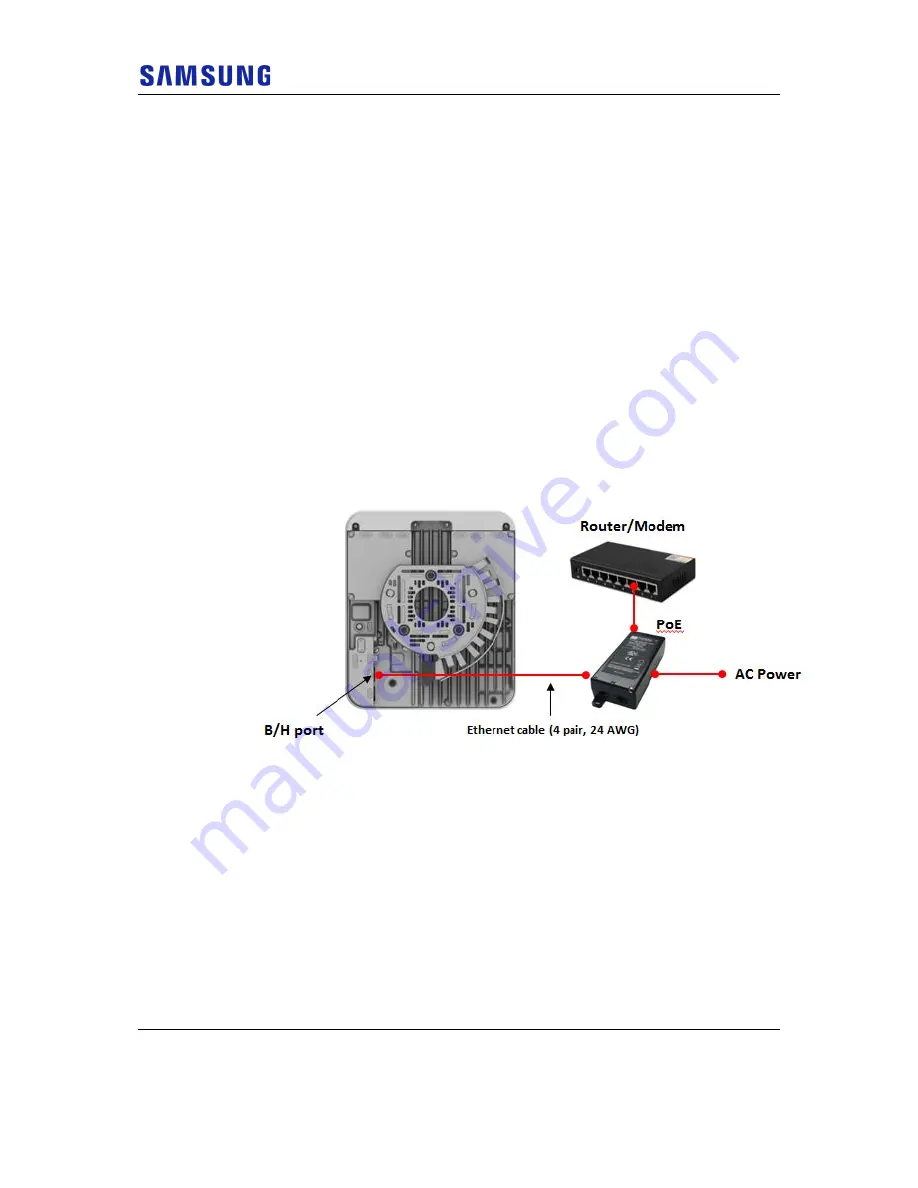
Chapter 2 Network Extender Setup
Verizon 4G LTE Network Extender 2 for Enterprise User Guide v1.0
25
Copyright © 2019, All Rights Reserved.
The Network Extender supports both physical layer and LLDP (802.1AB)
negotiation of power, which are supported by many endspan sources. These
endspans may still have to be configured to allow auto-negotiation on the port,
and the installer should also check the endspan’s surplus power capacity, to
ensure all units connected to the endspan have sufficient power.
Many PoE switches are configurable in terms of their PoE power output on a
port-by-port basis. If the Network Extender is connected to a configurable PoE
capable switch/router/midspan source, please make sure the source can
provide, and is configured to provide, adequate power on that port.
If sufficient power cannot be supplied on the port, please disable PoE
capabilities on that port of the PoE source to prevent the endspan from
disabling the Ethernet port entirely, due to power incompatibility. In this case,
the best option would be to use a separate PoE power midspan capable of
supplying sufficient power.
In the event that the Ethernet port has been disabled on the router/switch, the
LED indicator on the Network Extender will flash red/yellow in an alternating
fashion. More detail is included in the troubleshooting section.
Figure 9. PoE connection using 60W PoE
RF Antenna Extension
The Network Extender has an embedded RF antenna on the front cover, as well as
6 different external RF antenna ports on the top of the Network Extender for
various Indoor coverage applications.
Figure 10. Network Extender external RF antenna port
















































